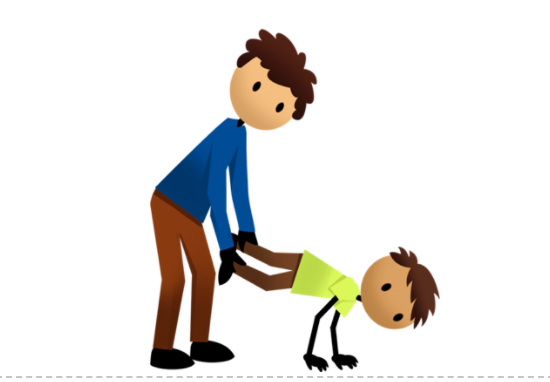Many of our children present with low tone or neuromotor dysfunction causing weakness in their core and scapular stabilizers. Wheelbarrow walking is a fun and helpful activity to target these deficits.
Wheelbarrow Walk
Benefits:
- Core Strengthening
- Scapular stabilization
- Hand intrinsic musculature strengthening
- Proprioception
- Heavy work from weight-bearing on hands
Items Needed:
- Motivating toys to walk toward
How to:
- Have child positioned on hands and knees
- Grab the child’s legs and lift them so their hands are pushing down on the floor
- Use your hands to support your child’s legs while child walks on their hands toward their favorite toy. Be sure to cue the child to lift their head to look at the toy they are walking to.
- At first, the child will fatigue quickly. Limit to short distances.
**Based on your child’s level of strength, more support may be needed. Hold the child from their pelvis to give more support. As they get stronger, support can be placed at knees and ankles.
Support at Pelvis

Support at Knees

Support at Feet

How do I know my child needs more support?
- A downward bend in the back is often present when the back is not strong enough to maintain a flat spine.
How do I continue to challenge my child?
- Decrease the level of support further down the legs
- The child can progress through various surface levels
- Firm surface
- Soft surface
- Walking up/down a ramp
- Walking up/down steps or elevated surfaces
- Increase distance

Blue Bird Day fosters socialization, sensory regulation, and pre-academic learning in children ages 2-7 years in therapeutic rotations that simulate preschool and kindergarten settings. Our compassionate therapists practice a relationship-based and family-centered approach, provide parent training, and collaborate on goals and individualized intensive treatment plans for your child.
We believe in a collaborative and multi-disciplinary team approach to therapy. A team of occupational therapists, speech-language pathologists, dietitians, developmental therapists, behavioral therapists, physical therapists, and therapeutic assistants are created for each child to ensure child and family are fully supported and the best possible results are achieved.
Options for individualized, group and virtual therapy sessions are available as well.
Want to learn more or you have a specific question? Feel free to connect with us here!



